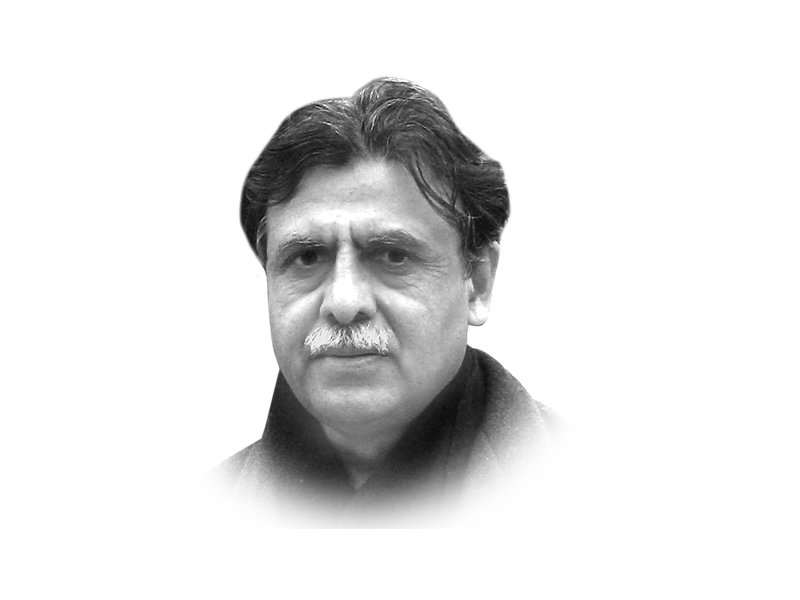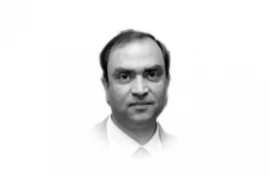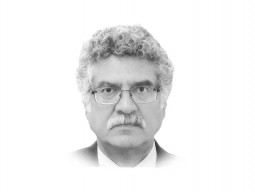
Today, Asean is aspiring to become an economic, political and security community, much in line with the European Union. To its detractors, this may seem like wishful thinking as the region still has a long way to go. As an economic hub, it is, however, drawing foreign direct investment to the tune of $108 billion, while the trade volume is touching over $2 trillion. With a population of 600 million people, its sea waters are three times more in area than its land mass, with the former accounting for the world’s busiest shipping lanes and a vast reservoir of gas and oil. In view of overlapping economic interests and conflicting maritime claims in the South China Sea, the region is not free from tensions and disputes but the fact remains that member countries have acquired the art of living with these disputes. The leadership and opinion-makers continue to strive to keep the intensity of these disputes at a low end. The overarching principle underlying interstate relationships is ‘renunciation of the use of force’, while pursuing their respective claims. Coming from the subcontinent, this certainly makes me hang my head in shame as in our region, we never tire of accusing each other of fomenting cross-border terrorism and of conducting proxy wars.
Travelling through the Asean region provides one with a useful vantage point to observe the events which are unfolding here. There is clearly a yearning for more democracy. Thailand, for instance, is passing through virulent street protests and head-on clashes between the opposition and the government. The prime minster is heading for general elections in February, which the opposition is resisting through violent protests on the plea that massive political reforms through a neutral body must precede any election. This yawning divide represents an intense power struggle between the urban south and the rural north and north east, between the city-dwelling consumer and the farm producer. The prime minster and her party have a strong political base in the rural areas and have never lost any election since 2001, despite occasional adventurism by the army. The country has a history of military takeovers but the positive thing here is that these takeovers did not have enough staying power.
Indonesia, in the post-Suharto era, has made evident gains leading to political consolidation. Presidential and general elections have been held at regular intervals, with smooth transfers of power. The incumbent president is about to complete his constitutional term and the country is now poised for the next elections.
On the economic front, business-friendly policies and political continuity are reaping dividends for the country.
Malaysia recently passed through a tumultuous phase of general elections. Prime Minister Najib Razak’s Barisan Nasional, a coalition in a multi-ethnic polity, was able to gain control but did not fare as well as was being expected. In a diverse and multi-ethnic society, policies of affirmative action are now resulting in growing wariness amongst the minority communities. The level of tolerance and respect for each other’s values at the societal level, however, is still quite remarkable. The fact that the country is drawing about 35 million visitors each year speaks for its openness and congeniality.
In Myanmar, the military-backed ruling party of President Thein Sein is heading for an agenda of far-reaching political reforms. The president has earned respect through broadening the democratic base ever since he took over in 2011. A general amnesty that was announced in the country set the ball rolling in this direction. The government is now proposing constitutional amendments framed by the military, which debarred Aung San Suu Kyi from contesting the presidential election as she had close relatives who were foreign nationals. The iconic lady’s late husband and two of her sons were British nationals. Once the bar is gone, her charisma, record of unrelenting political struggle and the heritage of being the daughter of a freedom fighter makes Aung San Suu Kyi a probable choice for the highest political office in the country. Part of the Constitution defines the army’s role, giving it a 25 per cent stake in parliament. There is a view that this provision should be done away way with but it remains to be seen how the stakeholders are going to view any change in this regard. Foreign investment is coming in, with the economy gradually opening up after decades of isolation.
While Southeast Asia strikes a positive note on so many fronts, there is a disturbing streak in the form of majoritarianism, which is quickly catching up with these diverse societies. Muslim majoritarianism is rearing its head in Malaysia and Indonesia, while Buddhist majoritarianism has been responsible for the woes of Muslims in Thailand and Myanmar. This is certainly something to worry about. One only hopes, given the strong traditions of tolerance in this region that these societies will get over this phase. Diversity and the recognition of plurality in public and private life have been their key strength.
In South Asia, we had a regional framework known as Saarc, which has been a non-starter compared with many other such regional blocs. Our bilateral hangovers have often overshadowed multilateral imperatives. It is time now to mull over the way we have to work around our differences and disputes if they are not amenable to resolutions after over six decades. What we learn from the Southeast Asian nations is that national security can only be guaranteed if we all contribute towards regional peace. And regional peace can only be had if we are at peace with ourselves.
Published in The Express Tribune, January 21st, 2014.
Like Opinion & Editorial on Facebook, follow @ETOpEd on Twitter to receive all updates on all our daily pieces.
COMMENTS (13)
Comments are moderated and generally will be posted if they are on-topic and not abusive.
For more information, please see our Comments FAQ




1735040357-0/Untitled-(100)1735040357-0-165x106.webp)








1734946202-0/Express-Tribune-(6)1734946202-0-270x192.webp)
1732012115-0/Untitled-design-(14)1732012115-0-270x192.webp)
1734899716-0/image-(15)1734899716-0-270x192.webp)


@gp65: It is interesting to learn about the distorted image that Indians like my friend gp65 have in their minds about their history and as such about the creation of Pakistan. Following are some undisputed facts which might be helpful in coming close the truth.Muhammad Ali Jinnah known as ambassador of Hindu Muslim unity worked with congress for 20years.He was and such Muslim League were for United India till 1946 when Muslim League accepted Cabinet Mission plan but Congress backed out.Jinnah, wanted to keep India united but with political safeguards provided to Muslims such as 'guarantee' of 'parity' in the legislatures because the Muslims were genuinely apprehensive that( because of majoritariansim) the British Raj was simply going to be turned into a 'Hindu Raj' once the British departed.It was only when the Muslims league found itself pushed to the wall a call for Pakistan was given and mind it there is was no provision for any sort of migration between Pakistan and India in the agreement signed between the Congress and Muslim League except for the Govt employees who could opt as they wished.Unfortunately migration and massacre on mass scale were planned and supported by the the then Chief Minister of East Punjab which resulted into the migration of five million Muslims to West Punjab where a reaction caused the migration of four million Hindus and Sikhs.Violence erupted in Bihar West and East Bengal as well causing migration of Muslims and Hindus. It may also be corrected that the population of Hindus in Pakistan constituted twenty per cent of the population when Bangladesh was a part of Pakistan as majority of the Hindus resided there and as such now they constitute more than 20 percent of the population of Bangla Desh.Any corrections are most welcome.
"The leadership and opinion-makers continue to strive to keep the intensity of these disputes at a low end. The overarching principle underlying interstate relationships is ‘renunciation of the use of force’, while pursuing their respective claims" The wrtier has rightly pointed out towards key to success for the Asean countries. We in Pakistan too can look forward for better era in the context not only that there has been a peaceful transfer but the present government has taken a great initiative to promote business relations between Pakistan and India.However the most interesting part of the article is about the writers concern towards Buddhist majoritarianism which has caused massacre in Myanmar and Thailand and Muslim majoritarainsim which is rearing head in Malaysia...Unfortunately in the case of Pakistan it was Hindu Majoritarianism which resulted into the creation of Pakistan along with an unprecedented migration in the history along with a massacre....and the attitude as reflected in the comments of @It Is (still) Economy Stupid still persists..
India too is to be blamed in this regard. If Pakistan is unwilling to talk commerce and trade, what stops India from forging ahead with all the other countries of SAARC? Are we actively pursuing to double our trades with all the remaining SAARC members? Have we set out a an economic vision for the South Asian region as a whole with India acting as the pivot? Just wondering.
Sir, looking at the advances of others and wishing us to follow in the same pattern is pointless. Our thought process, our warped sense of right and wrong, our deep seated mistrusts, our misguided religious outlook are all factors that when considered one realises that what we need is something completely different. We have to come up with a novel solution suited to our needs and not one we have to emulate.
unless, hatred from the textbooks of the primary and secondary school is not stopped, there will be no change in the mindset. this is the fundamental reason in my opinion.
it will take atleast 1 generation to change in the attitude.
I live in JB. Daily and week end spill over from Singapore to JB is unique and common with people living in JB daily commuting to Singapore and Singaporeans coming over to Malaysia for business and shopping over the weekend. While my Indian and Malayisan colleagues enjoy to the benefit of on arrival visas in Indnoesia / Thailand on their passports + upto 2 year social visa on Indian passports for Singapore; I have to go thorugh lenghty formalities for my visa appication yet not sure about the outcome. This is inefficient mobility across regions is a great disadvantage to green passport
@It Is (still) Economy Stupid: You are right dear. Every Pakistani (Muslim) are so obsessed with Kashmir without even knowing about the history of Kashmir. We blame india in one way or another. We have to Stop blaming india keeping kashmir in context. in this way Pakistan and other SAARC countries come along on a single page.
Timely piece , I feel the countries of South Asia notwithstanding of their size and population ,have a great deal to learn from the south East Asian countries. Merchandise trade and inter flow of services is bringing about a sea change both in the working and thought process in the region.
"What we learn from the Southeast Asian nations is that national security can only be guaranteed if we all contribute towards regional peace. And regional peace can only be had if we are at peace with ourselves." We all know that SARC is not effective because of a spoiled brat who has not grown up even at the age of 66 years. The day Pakistan stops comparing to India and accepts that India has moved on and she can not catch up things will improve. Except for crossing in Korea, border crossing in 80% of countries in the world is civilized and smooth as non state actors is a local phenomenon. Those who have experienced the smooth relations between the neighboring countries yarn for similar things between India and Pakistan. Some people or institutions gain power from chaos and right now chaos is not going away any time soon.Obsession with Kashmir will become kamikaze for Pakistan.
Great observations. Please write an article calling for tolerance towards Hindus, Christians, Ahmadis and Sikhs in Pakistan.